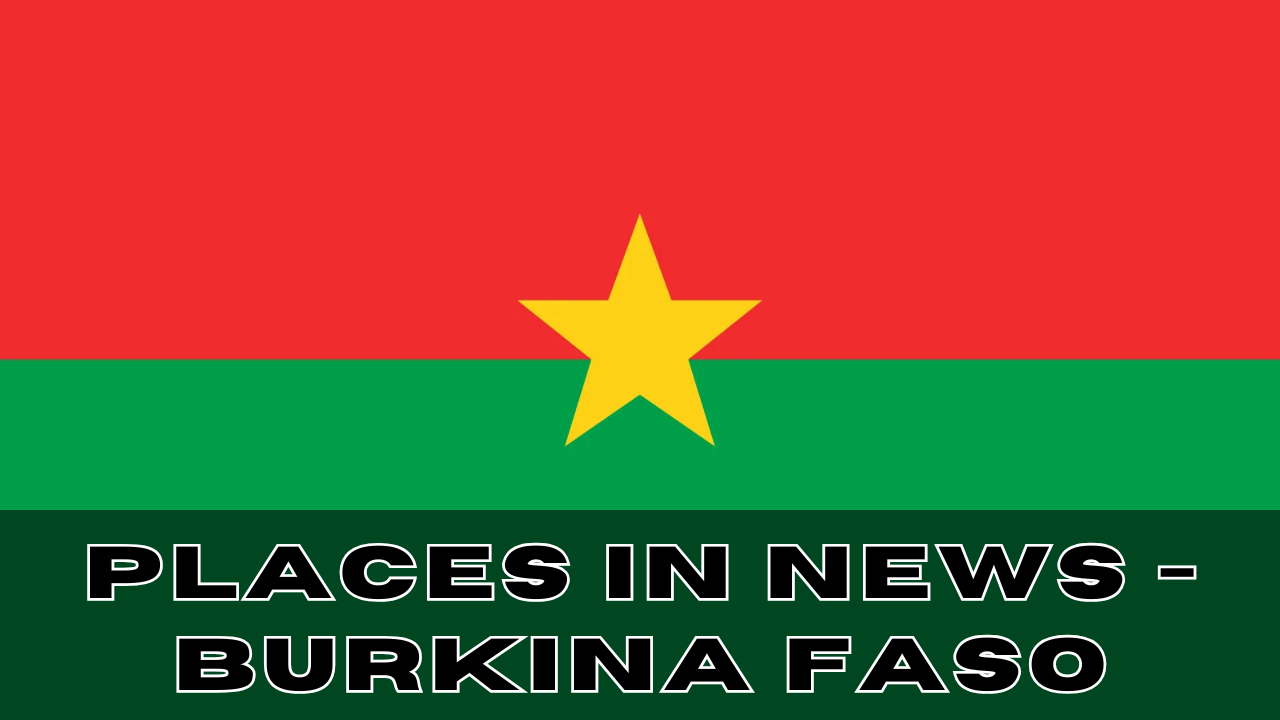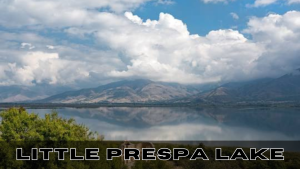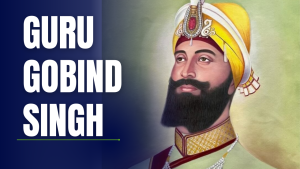Font size:
Print
Places in News – Burkina Faso
Context : Burkina Faso
On August 24, terrorists linked to Al Qaeda attacked Barsalogho town in Burkina Faso, resulting in nearly 600 deaths within a few hours, as reported by France’s top intelligence agencies.

About Burkina Faso
- Location: Landlocked country in Western Africa.
- Geography: Occupies an extensive plateau; characterised by grassy savanna in the north, sparse forests in the south.
- Independence: Formerly a French colony (Upper Volta); gained independence in 1960. Renamed Burkina Faso in 1984, meaning “Land of Incorruptible People.”
- Capital: Ouagadougou, located centrally, approximately 500 miles (800 km) from the Atlantic Ocean.
Land
- Borders:
- North/West: Mali
- Northeast: Niger
- Southeast: Benin
- South: Côte d’Ivoire, Ghana, Togo
- Topography: Extensive plateau with a slight incline to the south.
- Major rivers: Black Volta (Mouhoun), Red Volta (Nazinon), White Volta (Nakambé), and Oti.
- Seasonal flow variations; some rivers dry up in the dry season.
- Southwest features sandstone plateaus and the Banfora Escarpment (~500 feet high).
Climate
- General Conditions: Sunny, hot, and dry.
- Climate Zones:
- Sahelian Zone (North): Semiarid, 3-5 months of rainfall.
- Sudanic Zone (South): Tropical wet-dry, higher rainfall and temperature variability.
- Seasons:
- Dry & Cool: Mid-November to mid-February (60 °F nights).
- Hot Season: Mid-February to June (temperatures in low 100s °F).
- Rainy Season: June to September.
- Intermediate Season: September to mid-November.
- Annual Rainfall: 40 inches (1,000 mm) in the south; less than 10 inches (250 mm) in the north.
Vegetation:
- Northern savanna: Prickly shrubs and stunted trees.
- Southern area: Scattered forests along rivers; endemic species include shea and baobab trees.
People
- Ethnic Groups: Predominantly Mossi, Gurma, Yarse, Gurunsi, Senufo, Bwa, Lobi, Samo, Marka, and Dyula.
- Languages:
- Official language: French.
- Major local languages: Moore (Mossi), Dyula (commerce).
- Religion: Majority Muslim (>50%); significant Catholic (20%) and traditional religious groups (16%).
Economy
- Agriculture: Subsistence farming and livestock raising (90% of population).
- Major crops: Cotton, shea nuts, sesame, sorghum, millet, corn, peanuts, rice.
- Resources:
- Minerals: Gold, manganese, nickel, bauxite, zinc, lead, silver.
- Gold mines primarily located in Poura, Sebba, and Dori-Yalogo.
- Currency: CFA franc (pegged to the euro); Central Bank of West African States issues currency.
Subscribe to our Youtube Channel for more Valuable Content – TheStudyias
Download the App to Subscribe to our Courses – Thestudyias
The Source’s Authority and Ownership of the Article is Claimed By THE STUDY IAS BY MANIKANT SINGH






